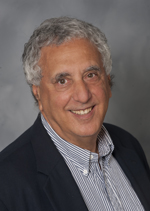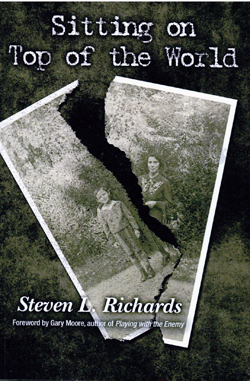Steven L. Richards, Sitting on Top of the World, © 2014 Create Space Independent Publishing, ISBN 978-1-49492-541-3, 516 large print pages.
By Donald H. Harrison

 SAN DIEGO—Holocaust memoirs and titles like Sitting on Top of the World seem to contradict each other until one remembers that they are written about people who survived the Shoah. After their liberation, some of Hitler’s victims experienced a sense of elation that they were still alive.
SAN DIEGO—Holocaust memoirs and titles like Sitting on Top of the World seem to contradict each other until one remembers that they are written about people who survived the Shoah. After their liberation, some of Hitler’s victims experienced a sense of elation that they were still alive.
This was the case of Kurt Wagner (ne Walker), who survived a home broken when his Nazi father divorced his Jewish mother, taking his older brother Heinz with him. Kurt and his mother were eventually deported from the German town of Karlsruhe to a camp in Vichy, France, where American Quakers were able to get him a spot at a nearby boarding school. Then, when the Nazis ordered the Vichy government to round up Jews, the Quakers smuggled him out of France, to Morocco, and eventually to the United States, where he bounced from one foster family to another.
Because he was a shy boy, reticent to talk, and deprived of schooling for a good part of his life, some social workers in the United States thought he might be mentally backwards, however it was not intellect that he lacked. The young man needed a place to belong, a family that would love him. This story tells both of his privation and suffering in Europe, and the heartwarming love he found in the arms of a childless couple whose lives he made complete.
While the book mainly follows Kurt, who embraced the Judaism of his mother, to a lesser degree it also follows Heinz, who under his father’s guidance was enrolled in the Hitler Youth. But being half Jewish, half Aryan, Heinz never could be accepted for who he was by the boys his age. And with his father living in another city with a second wife, Heinz—while being raised by paternal grandparents – seethed with resentment at his father and everything he stood for
The boys really had no memory of each other, and as they got older – with all that had passed in their lives – finding brotherly love became harder and harder, even as some sense of kinship between them was restored.
This book is both a Holocaust biography, with fine use of documentation by author Steven L. Richards, as well as a case study of how at least one child refugee flourished in America. True to his promise to his maternal grandfather – who never got over the boy’s mother, Ilse, becoming impregnated and then marrying a Protestant and future Nazi – Kurt became an exemplary student while studying for his bar mitzvah, and gave an emotional speech at his Chicago synagogue expressing love for his adopted country.
As readers follow Kurt through his young life—and watch him withstand wrenching events – they will be able to understand why he always wanted the reassurance of family around him. I recommend this book because it not only puts a human face on the Holocaust, but ought to assist us in empathizing with refugees from other countries taking tentative steps toward Americanization.
*
Harrison is editor of San Diego Jewish World. He may be contacted via donald.harrison@sdjewishworld.com
*